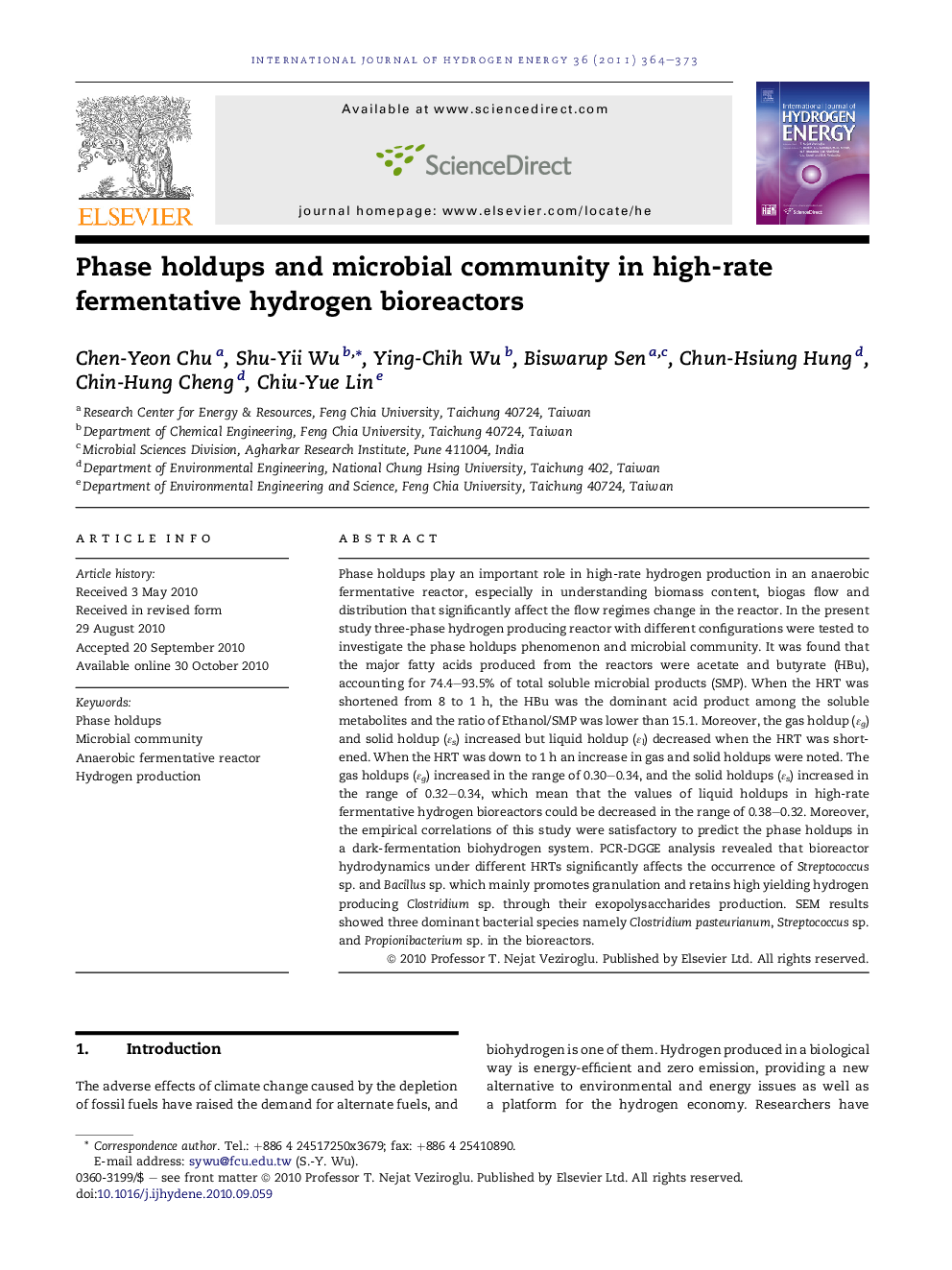| Article ID | Journal | Published Year | Pages | File Type |
|---|---|---|---|---|
| 1277785 | International Journal of Hydrogen Energy | 2011 | 10 Pages |
Phase holdups play an important role in high-rate hydrogen production in an anaerobic fermentative reactor, especially in understanding biomass content, biogas flow and distribution that significantly affect the flow regimes change in the reactor. In the present study three-phase hydrogen producing reactor with different configurations were tested to investigate the phase holdups phenomenon and microbial community. It was found that the major fatty acids produced from the reactors were acetate and butyrate (HBu), accounting for 74.4–93.5% of total soluble microbial products (SMP). When the HRT was shortened from 8 to 1 h, the HBu was the dominant acid product among the soluble metabolites and the ratio of Ethanol/SMP was lower than 15.1. Moreover, the gas holdup (ɛg) and solid holdup (ɛs) increased but liquid holdup (ɛl) decreased when the HRT was shortened. When the HRT was down to 1 h an increase in gas and solid holdups were noted. The gas holdups (ɛg) increased in the range of 0.30–0.34, and the solid holdups (ɛs) increased in the range of 0.32–0.34, which mean that the values of liquid holdups in high-rate fermentative hydrogen bioreactors could be decreased in the range of 0.38–0.32. Moreover, the empirical correlations of this study were satisfactory to predict the phase holdups in a dark-fermentation biohydrogen system. PCR-DGGE analysis revealed that bioreactor hydrodynamics under different HRTs significantly affects the occurrence of Streptococcus sp. and Bacillus sp. which mainly promotes granulation and retains high yielding hydrogen producing Clostridium sp. through their exopolysaccharides production. SEM results showed three dominant bacterial species namely Clostridium pasteurianum, Streptococcus sp. and Propionibacterium sp. in the bioreactors.
